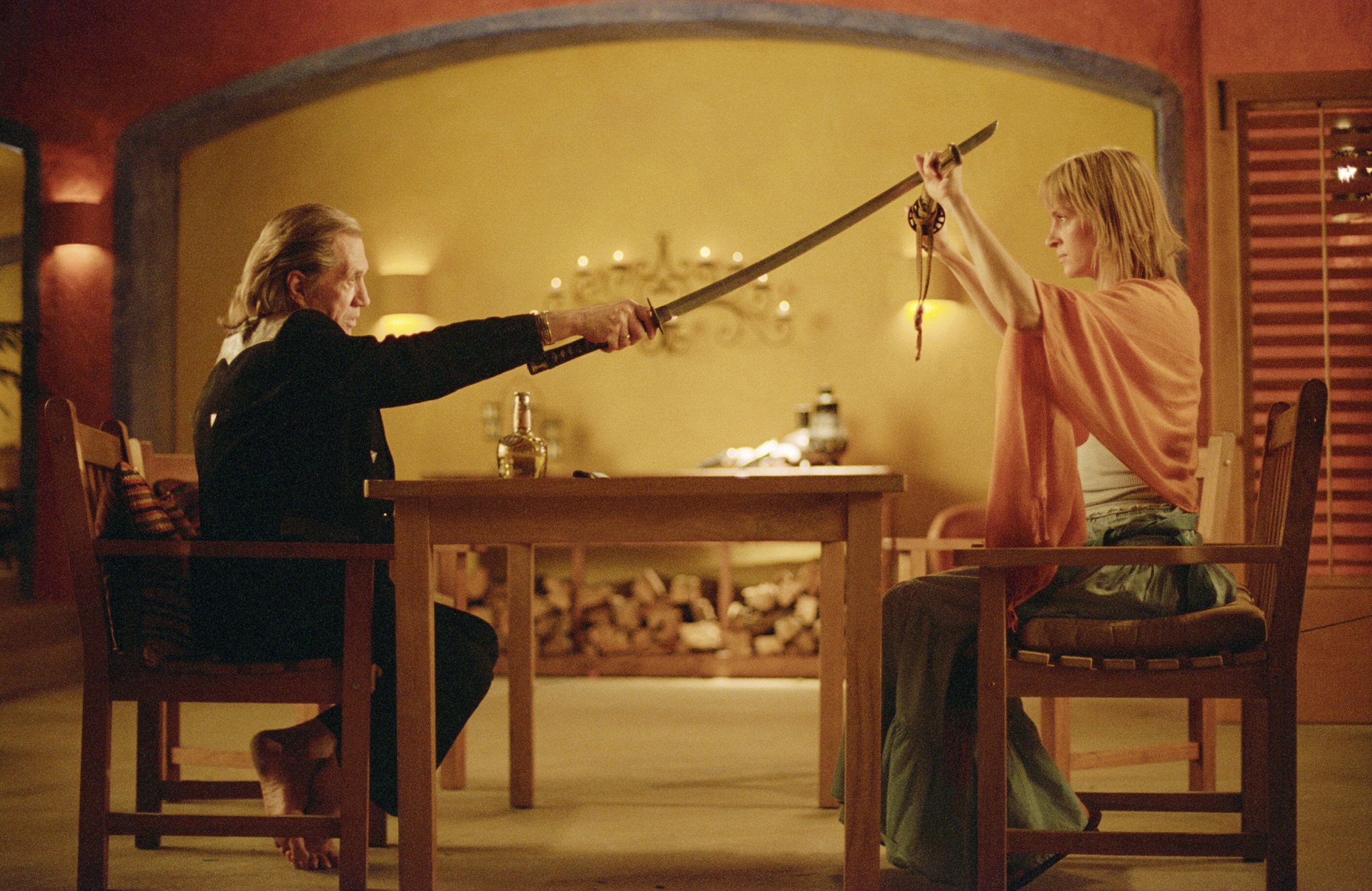Woke films always existed. You just did not care Part II
A History of US Films with Strong Female Leads
Key films
-
Coffy (1973)
The Exorcist (1973)
The Texas Chainsaw Massacre (1974)
The Omen (1976)
The Network (1976)
Halloween (1978)
Alien (1979)
-
Poltergeist (1982)
Flashdance (1983)
Star Wars Episode VI: Return of the Jedi (1983)
Red Sonja (1985)
Aliens (1986)
When Harry Met Sally (1989)
-
Blue Steel (1990)
The Silence of the Lambs (1991)
Once We Were Warriors (1994)
Cutthroat Island (1995)
Copycat (1995)
The Long Kiss Goodnight (1996)
Scream (1996)
G.I. Jane (1997)
Contact (1997)
Alien: Resurrection (1997)
Anaconda (1997)
-
The Cell (2000)
Charlie’s Angels (2000)
Girlfight (2000)
Tomb Raider (2001)
Miss Congeniality (2001)
Resident Evil (2002)
Frida (2002)
Kill Bill Volume 1 (2003)
Kill Bill Volume 2 (2004)
Alien Vs Predator (2004)
Elektra (2004)
Million Dollar Baby (2004)
The Descent (2005)
Death Proof (2007)
Doomsday (2008)
-
Resident Evil: Afterlife (2010)
The Girl With the Dragon Tattoo (2011)
The Hunger Games (2012)
Lords of Salem (2012)
Gravity (2013)
The Heat (2013)
Star Wars Episode VII: The Force Awakens (2015)
Crimson Peak (2015)
Mad Max Fury Road (2015)
Atomic Blonde (2017)
The Shape of Water (2017)
In this second part of the “Woke” article series, we analyse the claims by pseudo film journalists and scholars that strong female lead roles did not exist. And it is only due to the corpo-love of Disney, Marvel and Warner Bros in the last five or six years that “modern” audiences begun salivating over a non male savior. With misinformation statements provided by “expert” individuals who clearly have not seen anything prior to 2012, Marvel (“Captain Marvel” (2019)) and DC (“Wonder Woman“ (2017)) outputs were regarded as genre defining pieces of art (seriously) while (clueless) celebrities like Jennifer Lawrence (i.e., “nobody thought female action heroes would work until my “The Hunger Games” (2012-2015)) fueled further the conversation about film inequality and role limitations.
Just because you became aware at some point in our life/career, does not negate the world which has existed before you. This pointless act of whining disables the enjoyment of older cinematic outputs and prohibits the understanding of the hows, whys and whens of each eras. In stark contrast sits the anti-woke crowd despising certain elements in the current film slate (e.g., white villain, unstoppable female heroes) but has ultimately (and quickly) failed to recall how the same characteristics were present in older movies too (“The Long Kiss Goodnight“ (1996), “Kill Bill“ (2003-2004)). The history (as we are focusing in these article series) of US cinema though suggests otherwise.
No one denies the existence of misogyny in Hollywood, especially pre-millennium. Sean Connery’s Bond slapping a woman’s ass is a cringy moment these days for sure, but the mindset of the 60s was totally different from today’s. Consequently, some films have not aged well, but they can be used to remind us the evolution of art and society as a whole.
Initially in the more entertaining (and hence more audience appealing) genres of action, comedy and horror, women indeed were (occasionally) degraded into sex symbols, brainless bimbos and cardboard characters ranging from an obedient wife to a needy and consumerism loving girlfriend. Some additional points are offered through the use of the Bechdel test but context always matters. For example, accusing “The Thin Red Line” (1998) for the lack of strong female leads makes no sense. Alan Jones’s personal experiences in the Pacific front of World War II against the Japanese have no place for a female lead in a remote island where (only) men suffered terribly during one of the worst conflicts in human history?
We forgot though that women were the exclusive protagonists in supernatural, horror, noir, romance and drama flicks. If one counterargues with the lack of real challenging (or at least more box office drawing) roles, one might be right. Yet, things started to change drastically in the second half of the 20th century. The explosion of quality films during the 70s such as “The Exorcist” (1973), “The Texas Chainsaw Massacre” (1974), “The Omen“ (1976), “The Network” (1976), John Carpenter’s “Halloween” (1978) and Ridley Scott’s “Alien” (1979) were true cinematic breakthroughs emphasizing a tough and resilient female who overcomes a much more powerful adversary when the (take that anti-woke crowd) much stronger men perished for a variety of reasons. And let’s not forget the blaxploitation genre too (“Coffy“ (1973), “Foxy Brown” (1974)).
Sigourney Weaver in her iconic role as Ellen Ripley in Ridley Scott’s science fiction horror masterpiece “Alien” (1979)
Sigourney Weaver in particular as Ellen Ripley became a movie icon: her quick thinking, wits and determination resonated with fans who saw her repeated face offs (“Aliens” (1986), “Alien 3” (1992), “Alien: Resurrection” (1997)) against the xenomorph. And here is the supply and demand pipeline which Jennifer Lawrence and co do not bother to understand. Complaining about pay inequality in a field where box office returns matter, little did she know that Weaver got (a whooping) $11 million dollars (in 1997!) to reprise Ripley in “Alien: Resurrection” because she is the one who will attract movie goers.
Following the influential success of “Alien”, several other films featured women as non traditional protagonists: “Poltergeist” (1982), “Star Wars: Episode VI: Return of the Jedi“ (1983), “Flashdance” (1983), “Nightmare on Elm Street“ (1984), “Red Sonja” (1985), “When Harry Met Sally“ (1989) and it was during the 90s when things really took off: “Misery“ (1990), Kathryn Bigelow’s “Blue Steel“ (1990), “Silence of the Lambs” (1991), “The Pelican Brief“ (1993), “Copycat” (1995), “Tank Girl” (1995), “Twister” (1996), “Anaconda” (1997), “Romi and Michele’s High School Reunion“ (1997). In woke language, most of these main characters faced problems of subtle or direct discrimination in a decade where women were making significant advances in certain male dominated professions. Iconic roles started to fill in cinephiles’ lists: Francis McDormand in “Fargo” (1996), Neve Campbell’s horror icon in “Scream” (1996), Demi Moore’s “G.I. Jane” (1997), Quentin Tarantino’s love letter to Pam Grier in his “Jackie Brown” (1997) and Robert Zemeckis’ “Contact” (1997).
It should be noted that Hollywood executives were indeed unwilling to have a woman headlining a major non-drama/comedy picture according to Finnish director Renny Harlin (“Die hard 2“ (1990), “Cliffhanger“ (1993)) who pushed really hard for Geena Davis to become an action star in the $90 million dollar blockbuster “Cutthroat Island“ (1995) and b-movie auteur Paul WS Anderson for wanting Milla Jovovich as the protagonist in his (always overlooked) “Resident Evil” (2002) adaptation which grossed over $1.2 billion dollars worldwide across six films. Consequently, by the time the new millennium entered, a significant trend saw women getting less “sexist” roles in the boys’ genres as:
unstoppable heroes who drew a bigger box office cut (”Charlie’s Angels” (2000), “Tomb Raider” (2001), Kate Beckinsale’s “Underworld“ (2003-2016) series, “Elektra” (2004), the race-swapped “Catwoman” (2004), Tarantino’s “woke” “Death Proof“ (2007), and the very expensive (but fun) “Doomsday” (2008)).
more nuanced professionals (“The Cell” (2000), “Bring It On” (2000), Michelle Rodriguez’s boxer in “Girlfight” (2000), “Erin Brockovich“ (2000), “Miss Congeniality“ (2001), ”Enough” (2002), “Frida“ (2002), Clint Eastwood’s Oscar winning “Million Dollar Baby” (2004), “Alien Vs Predator” (2004), “Taking Lives“ (2004), “Aeon Flux“ (2005), “Hard Candy“ (2005), “The Descent” (2005), “V for Vendetta” (2006).
still the main headliners in traditional genres like slashers (“Freddy Vs Jason” (2003), “Wolf Creek“ (2005), “Halloween“ (2007), “Halloween 2” (2009)), supernatural horror (“The Ring” (2002), “The Grudge” (2004), “Dark Water” (2004), “Silent Hill” (2006)) and creature features (“Rogue” (2007)).
Uma Thurman’s “The Bride” faces off the titular Bill in Quentin Tarantino’s “Kill Bill Volume 2” (2004), one of the latest strong female protagonists that made cinematic history.
Milla Jovovich as Alice in “Resident Evil: Afterlife” (2010), a viable franchise of six films with $1.2 billion dollars gross worldwide.
Tarantino crafted with Uma Thurman, the greatest homage in martial arts in his superb and critically loved “Kill Bill” saga which surprise, surprise can be labeled either as woke supremo material (e.g., white male villain, unstoppable strong female character, condescending tone) or right-wing propaganda (e.g., celebrating motherhood, main lead falling for the villain) depending your perspective. This demonstrates just how the ridiculous label slapping in stories, art and entertainment dilutes the purpose of a creative procedure.
After 2010, women leading in science fiction, horror, action, adventure and more became almost the norm: ”Black Swan” (2010) made men (like myself) to recognize the tremendous efforts ballerinas conduct for a performance, Jolie’s “Salt” (2010), the American remake of “The Girl with the Dragon Tattoo” (2011) introduced Lisbeth Salander, there was “Hanna” (2011), “Lords of Salem” (2012), Sonderberg’s “Haywire” (2012), “The Hunger Games” (2012), Alfonso Cuaron’s ground-breaking “Gravity” (2013), “The Heat“ (2013), Doug Liman’s “Edge of Tomorrow” (2014), “Star Wars Episode VII: The Force Awakens” (2015), “The Witch” (2015), Guillermo del Toro’s “Crimson Peak” (2015) and “The Shape of Water” (2017), “Atomic Blonde” (2017), “Mother!“ (2017), “Wonder Woman” (2017), and “Underwater“ (2020) reduced men as spectators in the unfolding action and ongoing mysteries - Tom Cruise playing a coward made “Edge of Tomorrow” (2014) an instant classic offering at the same time story finesse and relevance. The spectacular “Mad Max: Fury Road“ (2015), which attracted (pointlessly) criticism from the anti-woke crowd, presented sharp social commentary in the context of the most metal action of all time and added a welcome partner for Max in Charlize Theron’s Furiosa who could be the real protagonist (that’s fine, Max’s story has been told already).
Michelle Yeoh’s career best performance in “Everything Everywhere All at Once” (2022).
Yet, despite all this, modern Hollywood thinks that a strong female role should act with one liners, machoism, sarcasm and no emotional charisma - just how Steven Seagal was at his peak but with less physical conviction. While elements of these can be (and have been used) in older films, their emphasis was to tell a story first and make an “activistic” statement second. And for this reason precisely you have epic failures in “Captain Marvel” (2019), “Charlie’s Angels” (2019), “Mulan” (2020), “Wonder Woman 1984” (2020), “Black Widow” (2021), and “Birds of Prey” (2020) since they all feature carbon copy leads oozing zero growth and weaknesses, shoehorned in poorly staged action sequences seeking to convince audiences of what let’s say, Jackie Chan and Tom Cruise can do with their obvious digi doubles. But there is still light amidst all this creative abyss: “Monster Hunter” (2020), “Everything, Everywhere All at Once” (2022) and “Tar” (2022) are the latest examples of delightful entertainment.
If you look towards cinematic outputs from all around the world, you will find that women had less conforming roles even during the 60s. Yet one is left to wonder whether any of these vocal individuals know or have seen at least one of the aforementioned films. Roll on Part 3.





